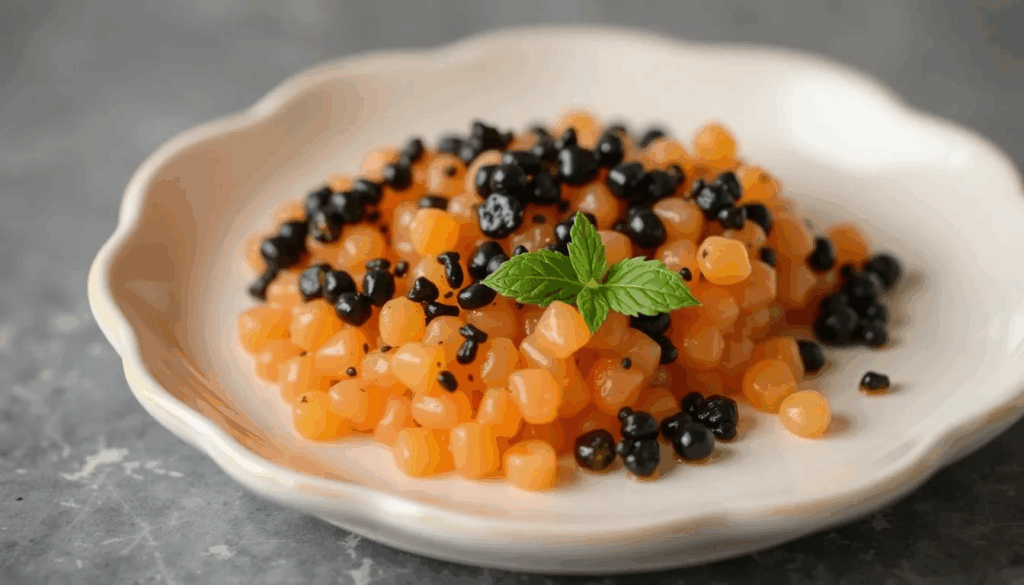Caviar has long been synonymous with luxury, elegance, and exclusivity. From glittering party platters to high-end restaurants, this delicacy carries a mystique that can be as intimidating as it is intriguing. But if you’re new to the world of caviar, you might be wondering: what does caviar taste like? Is it fishy, salty, or something more complex? This guide will break down the flavors, textures, and nuances that define caviar, giving beginners a clear picture of what to expect.
Understanding Caviar
First, it’s important to clarify what caviar is. True caviar comes from the roe (eggs) of sturgeon, a type of fish that has been prized for centuries. While other fish eggs, such as salmon or trout roe, are sometimes labeled “caviar,” purists reserve the term for sturgeon. Depending on the species—Beluga, Ossetra, or Sevruga, for example—the flavor, size, and color of the eggs can vary significantly.
Caviar isn’t just about taste; it’s also about texture and aroma. Its unique qualities are a combination of subtle brininess, delicate fishiness, and a luxurious, melt-in-your-mouth consistency.
The Flavor Profile
One of the first things beginners notice is caviar’s saltiness. Unlike heavily seasoned foods, the salt in caviar is mild and balanced, enhancing the natural flavors rather than overpowering them. It’s the kind of saltiness that awakens your taste buds without making you reach for a glass of water.
Beyond the initial briny burst, caviar offers a subtle nutty or buttery undertone, especially in premium varieties like Ossetra. Some describe high-quality caviar as having a creamy richness that lingers on the palate, while others detect faint hints of the ocean—a gentle reminder of its aquatic origins. For anyone asking, “What does caviar taste like?” the answer lies in this balance of briny freshness, buttery richness, and gentle oceanic notes. The flavor is complex yet restrained, which is part of what makes tasting it such a refined experience.
Texture Matters
Texture plays a pivotal role in caviar tasting. When served correctly, the eggs should feel firm yet delicate, gently popping between your tongue and palate. This “pop” releases the briny liquid inside, combining taste and texture in one elegant mouthful. If the eggs are too soft, it may indicate lower quality or improper storage, while overly hard eggs can feel rubbery and unpleasant.
For beginners, the texture can be as memorable as the flavor itself. The sensation of tiny, glossy pearls bursting on your tongue is an experience unlike any other culinary delight. It’s one of the reasons why caviar is often savored slowly, in small amounts, rather than consumed in large quantities.
Aromatics and Aftertaste
Caviar’s aroma is subtle but distinct. Unlike the pungency that sometimes accompanies other seafood, caviar’s scent is fresh and slightly briny, reminiscent of the sea. Some varieties carry a nutty or earthy scent, which complements the taste. After swallowing, you might notice a lingering umami richness that enhances the overall experience, leaving a gentle warmth and depth that invites another bite.
Serving and Pairing Tips
For first-timers, the way you taste caviar can dramatically influence your experience. It’s best enjoyed chilled, served in small amounts on a non-metallic spoon, as metals can alter the flavor. Classic pairings include lightly toasted blinis, unsalted crackers, or even a dollop of crème fraîche. Champagne or dry vodka are traditional beverages that complement caviar without masking its nuanced flavors.
Avoid overpowering ingredients like strong cheeses or acidic sauces, as they can distract from caviar’s subtle complexity. The goal is to let the eggs shine, savoring each tiny burst of flavor.
The Takeaway
Caviar is a delicate balance of briny, nutty, and buttery flavors, complemented by a unique, melt-in-your-mouth texture. It’s not overwhelmingly fishy or salty; rather, it’s a refined taste experience that rewards patience and attention. For beginners, the key is to approach caviar with an open palate, appreciating both the flavor and the sensory experience of each tiny pearl.
In essence, tasting caviar is about savoring subtlety. It’s a culinary treat that whispers rather than shouts, offering a glimpse into a world of luxury and tradition. Whether you’re sampling it for the first time at a special occasion or exploring its complexities in a high-end tasting, caviar is a unique journey for the senses—one that leaves a lasting impression long after the last pearl has melted away.

